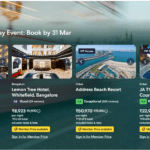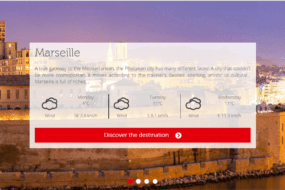
Traveling offers more than a chance to see new places—it’s an opportunity to truly understand the heartbeat of a destination. That heartbeat is found not in the tourist hotspots, but in the everyday life of locals: the food they eat, the traditions they celebrate, and the stories they tell. Cultural immersion is about moving beyond surface-level experiences and diving into the core of a place and its people.
So how do you travel not just as a visitor, but as someone seeking to understand and participate in local life? This guide will show you how to transform your trips into rich, authentic adventures through meaningful cultural immersion.
What Is Cultural Immersion?
Cultural immersion means engaging with a culture on a deeper level by actively participating in the daily lives, traditions, and values of the local people. It’s about learning from locals, respecting customs, and often stepping outside your comfort zone to experience life through a different lens.
It doesn’t require becoming an anthropologist or staying for months. Even short trips can be immersive with the right mindset and approach.
Why Cultural Immersion Matters
Before we dive into how to do it, let’s look at why it matters:
- Authentic Experiences: Cultural immersion offers more memorable, meaningful experiences than traditional tourism.
- Broader Perspectives: Seeing the world from another point of view increases empathy and understanding.
- Supports Local Communities: Engaging with local businesses and guides helps stimulate the economy and preserve cultural heritage.
- Personal Growth: Immersion often requires vulnerability and adaptability—qualities that foster growth.
1. Stay Where Locals Live
Your accommodation can shape your entire travel experience. Avoid international hotel chains when possible and opt for places that place you in the heart of a community.
Options for Immersive Stays:
- Homestays: Live with a local family. You’ll eat what they eat, learn about daily life firsthand, and often build long-lasting connections.
- Guesthouses and B&Bs: Smaller properties owned by locals often give more personalized hospitality.
- Airbnb or Rentals in Local Neighborhoods: Choose areas where locals live rather than tourist zones.
- Agritourism: Stay on a farm or vineyard to experience rural life and participate in daily chores.
Pro Tip: Read reviews carefully and look for hosts who are excited to share their culture.
2. Learn the Language (Even a Little)
Language is a gateway to culture. Even learning a few key phrases can dramatically change your travel experience.
Start With:
- Greetings and polite expressions (“Hello,” “Thank you,” “Excuse me”)
- Common questions (“How much is this?” “Where is…?”)
- Local food vocabulary
Locals often appreciate the effort, even if your pronunciation isn’t perfect. It shows respect and can open doors to more meaningful conversations.
Use apps like Duolingo, Babbel, or Google Translate to get started.
3. Eat Like a Local
Food is one of the most powerful expressions of culture, and one of the easiest ways to immerse yourself.
How to Eat Locally:
- Street Food: Often the most authentic and flavorful experience—just follow the crowds and eat where locals eat.
- Local Markets: Explore traditional markets, sample seasonal produce, and try dishes you’ve never heard of.
- Cooking Classes: Take a class with a local chef or family—learn how to make regional dishes and understand the ingredients and stories behind them.
- Avoid Chain Restaurants: Instead, ask locals for recommendations or check neighborhood spots on food apps like HappyCow, Yelp, or Google Maps.
4. Participate in Local Festivals and Traditions
Festivals are windows into the soul of a culture—celebrations of history, religion, art, and community.
What to Do:
- Research festivals happening during your stay.
- Join parades, ceremonies, or religious events if permitted.
- Dress appropriately and respectfully—sometimes local attire is encouraged.
- Ask questions and observe closely to understand meanings and symbolism.
Attending a local celebration can offer memories that last a lifetime—and help you connect with people in powerful, joyful ways.
5. Use Public Transportation
Tour buses and taxis can be convenient, but public transportation gives you a taste of everyday life.
Benefits of Riding Local:
- Interact with locals in their daily routines.
- See parts of the city you’d otherwise miss.
- Learn patience and flexibility in navigating new systems.
Whether it’s a rickshaw in India, a colectivo in Mexico, or a tuk-tuk in Thailand, these moments provide glimpses into authentic rhythms of local life.
6. Shop at Local Markets and Artisan Stores
Skip the souvenir shops and find treasures that truly represent the culture.
Tips:
- Visit traditional markets, cooperatives, and family-run stores.
- Ask about the story behind products—who made them and how.
- Buy handmade crafts, textiles, spices, ceramics, or musical instruments that reflect the culture.
- Practice respectful bargaining where appropriate.
You not only get something unique but also support artisans and local craftsmanship.
7. Volunteer or Join Community Projects
Giving your time (even for a few hours) can lead to deep connections and insight into local challenges and strengths.
Volunteer Opportunities:
- Teaching English or assisting in schools
- Environmental conservation projects
- Farming or permaculture work
- Cultural preservation initiatives
Research to ensure your efforts are ethical and beneficial to the community. Websites like Workaway, WWOOF, and Worldpackers offer great leads.
8. Hire Local Guides
A knowledgeable local guide can transform your understanding of a place.
Look for Guides Who:
- Are born and raised in the area
- Speak both English and the local language
- Offer niche tours (food, history, art, nature, etc.)
- Share personal stories, not just facts
You’ll often learn things you’d never find in a guidebook.
9. Take a Class or Workshop
Learning a skill from a local expert brings cultural traditions to life.
Class Ideas:
- Pottery, weaving, or dance classes
- Traditional music lessons
- Martial arts or local sports
- Art, painting, or batik workshops
These experiences deepen your appreciation for the culture’s creative expression—and often result in something you can take home.
10. Travel Slowly
Cultural immersion doesn’t happen when you’re racing through five countries in two weeks. It takes time to notice, absorb, and reflect.
Try This:
- Stay longer in one location (a week or more).
- Explore smaller towns or rural areas.
- Revisit places at different times of day—markets, plazas, parks.
Slow travel fosters relationships, familiarity, and a stronger connection to a place.
11. Be Respectful and Open-Minded
Cultural immersion is not about judging or comparing—it’s about learning and appreciating.
Cultural Respect Basics:
- Follow local dress codes and customs.
- Be mindful of photography—always ask before taking photos, especially in sacred or personal spaces.
- Avoid imposing your views or values.
- Listen more than you speak.
Approach each interaction with curiosity, humility, and respect.
12. Journal and Reflect
The depth of your cultural experience often grows in reflection.
Consider Writing About:
- Moments of connection with locals
- Things that surprised or challenged you
- Lessons learned about life, culture, or yourself
Journaling helps process experiences, track growth, and preserve the richness of your travels.
13. Support Cultural Preservation
As a traveler, you have the power to support initiatives that keep local culture alive.
Ways to Help:
- Visit museums, historical sites, and cultural centers.
- Support local performances (theater, dance, music).
- Purchase ethically-made cultural items rather than cheap knockoffs.
- Educate yourself on local issues—language preservation, heritage sites, or environmental threats.
Responsible travel contributes to the longevity of a culture and its stories.
Final Thoughts: Traveling With Heart and Intention
At its core, cultural immersion is about connection. It’s about putting yourself in someone else’s shoes, even just for a little while. It’s not always easy. Sometimes you’ll make mistakes, feel out of place, or get lost in translation. But that’s part of the journey.
To experience local life while traveling means traveling with your heart open. It means choosing presence over performance, authenticity over aesthetics, and curiosity over comfort.
Whether it’s sharing tea with a Berber family in Morocco, learning to samba in Brazil, or helping plant rice in a Balinese village, these are the moments that stick with you forever.
Quick Checklist: How to Culturally Immerse Yourself While Traveling
- Stay with locals or in community-based lodgings
- Learn a few phrases of the local language
- Eat local food and try traditional dishes
- Attend local festivals or religious events
- Ride public transportation or walk neighborhoods
- Support local artisans and markets
- Volunteer or engage in meaningful community work
- Take a class in a traditional craft or skill
- Hire local guides for deeper insights
- Travel slow and spend time observing daily life
- Practice cultural sensitivity and respect
- Reflect on your experiences through journaling
Travel doesn’t have to be fast-paced or picture-perfect. The best journeys are those where we open ourselves to the unknown, build bridges with people who are different from us, and come home a little wiser, a little humbler, and a lot more connected to the beautiful diversity of the human experience.
Happy travels—and may your next journey be deeply immersive, wonderfully unexpected, and richly rewarding.






















